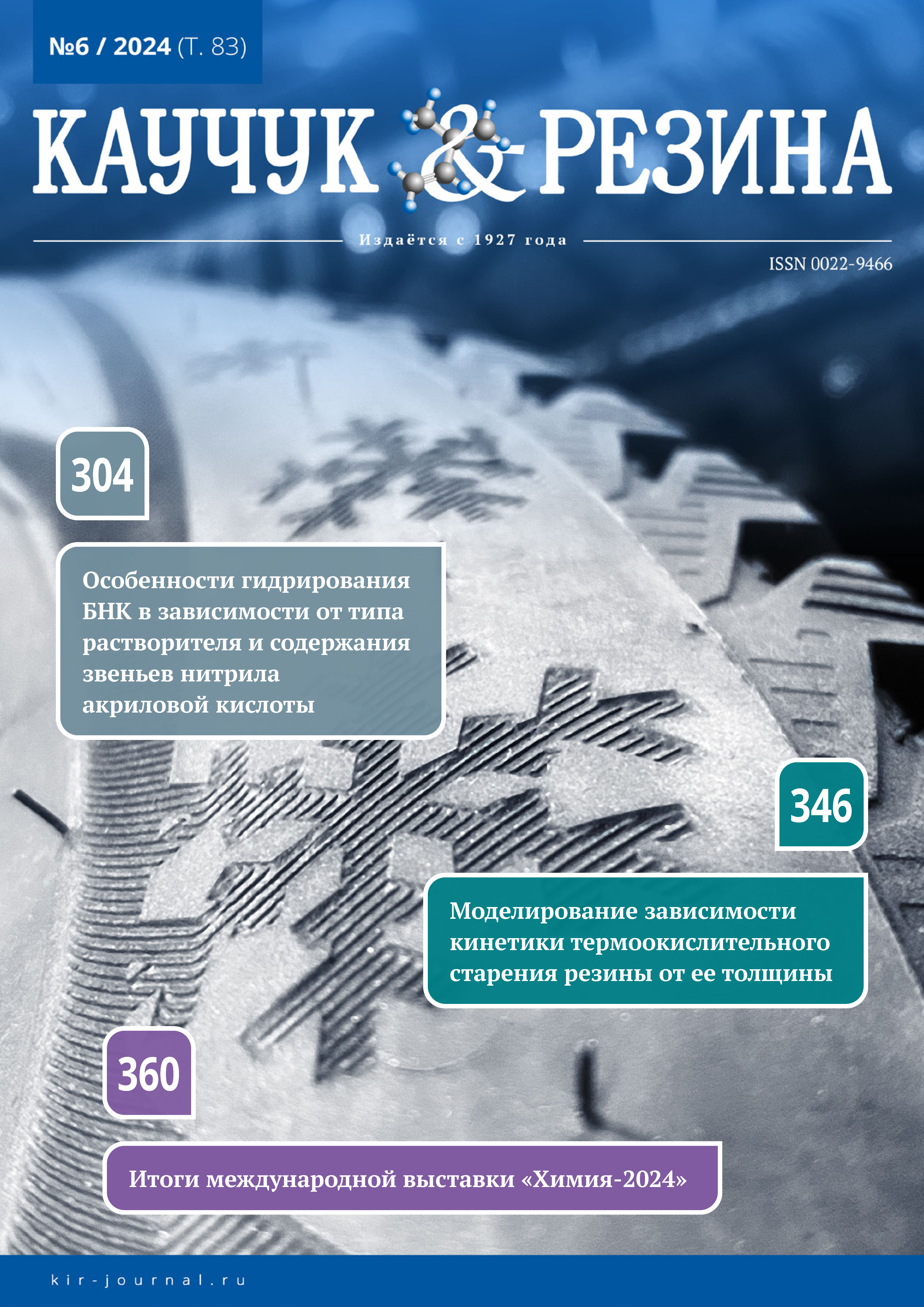Features of NBR Hydrogenation Depending on the Type of Solvent and Acrylonitrile Chains Ratio
Published 2024-12-23
How to Cite
Abstract
The research is considered to compare the efficiency of biogenic 2-methyltetrahydrofuran (2-mTHF) and monochlorobenzene as solvents for the hydrogenation of butadiene-nitrile rubbers using tris-(triphenylphosphine)rhodium chloride (Wilkinson catalyst). It was found that under the studied conditions, the degree of hydrogenation above 33 % could not be achieved using 2-mTHF. It is suggested that this is explained by the fact that the oxygen atom of 2-methyltetrahydrofuran can interact with rhodium in the structure of the Wilkinson catalyst, forming complex compounds with it during the catalytic cycle, reducing its activity. NMR and IR spectroscopy revealed that the replacement of the solvent with chlorobenzene provides the hydrogenation degree of about 80 %. At the same conditions of hydrogenation with increase of process time up to 40 h the hydrogenation depth of 98 % is realized. The study of the influence of acrylonitrile (ACN) links in NBR macromolecules showed that at ACN content of 18, 26 and 40 % the degree of hydrogenation, other conditions being equal, decreases and amounts to 98, 86 and 82 %, consequently. This is suggested to be due to the fact that CN-groups are strong ligands that can reduce the activity of the Wilkinson catalyst. The general information obtained is useful for upscaling the hydrogenation process of native NBR, but needs to be detailed through additional research.

